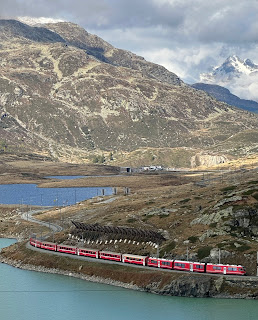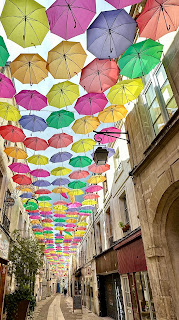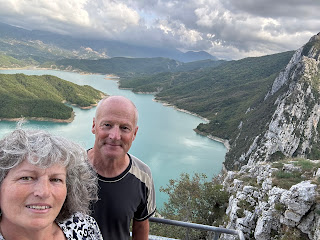Friday 11 October 2024
We’ve been back for a week and have caught up with all the family as well as a few friends. After chatting about our recent trip the question everyone asks is “Where’s next?”. We haven’t really given it a lot of thought yet but we are hoping to do a few short trips in the UK over the coming months. With one eye on the weather and another on various social media accounts we’re always looking for opportunities to see the Northern Lights and, as we approach ‘Solar Maximum’, now is a great time to see them.
There’s a large element of luck and a lot of science involved when it comes to seeing the Northern Lights or Aurora Borealis. But it’s never been easier to see them - taking advantage of apps, forecasts, social media and super smart smartphones.
The ‘Solar Maximum’ refers to the highest period of activity of coronal mass ejections (CME’s) which are clouds of charged particles, sunspots and solar flare activity during the sun's 11-year solar cycle. We are approaching the peak of the cycle with high activity expected.
I was lucky enough to see them every night of a four night trip to Arctic Norway with my twin sister Sue in February 2018.
But you don’t have to go that far to see the Northern Lights and there’s no guarantee that if you go to Norway or Iceland that you’ll see them. Dave and I have seen them three times here in the UK over the past 20 years. The first time was in 2004 soon after we moved to Shrewsbury, a very feint display which we weren’t really sure what it was initially. More recently, in May 2024, we saw them from the hills above Aberdovey and last night we headed to Moreton Corbet Castle near Shawbury, Shropshire (a 7 mile drive from our house).
So here’s a few of my own personal tips if you’re keen to try and see them:
Follow one of the Space Weather Forecasters who closely watch and report on solar activity, CME’s and flares. They will work out when we MIGHT see aurora. I follow Space Weather Woman Dr Tamitha Skov, but there’s plenty of others out there:
https://www.spaceweatherwoman.com/
Download a good App (my go-to is AuroraWatch UK) and set it up so you receive notifications from it. I have mine set for Red Alerts (but it’s on silent so I don’t get unwelcome alerts in the middle of the night). The levels are: Green (no activity), Yellow (minor activity), Amber (possibility of activity in northern areas) and Red (possibility of aurora anywhere in the UK).
Keep an eye out on the weather forecast. You really do need clear skies or minimal cloud. Ideally no moon or just a small moon.
On the day/night monitor the activity level and trend. AuroraWatch UK has an hourly activity index to measure ‘geomagnetic activity’. The value is updated every 3 minutes based on available data so the level may change during any given hour. Activity is recorded in nanotesla (nT) - a unit of measurement for magnetic field strength. In all honesty seeing a good Northern Lights display doesn’t happen that often so Dave and I decided we wouldn’t go out unless the activity was around 1000nT! This is because a) we are a bit lazy and b) we have a lot of light pollution where we live in Shrewsbury town centre so it means us getting in the van and driving away from the street lights. You need to be committed because the peak activity can be between 10pm and 2am, when most of us are happily snuggled up in bed not out aurora hunting!
If all the above indicate aurora might be visible from your region then get away from any light pollution (towns, street lights, car lights etc) and head for somewhere with a big sky and ideally with a view north. Consider in advance about where to go, think about where to park, your personal safety and also foreground interest. Bear in mind though that the aurora can shift around once it gets going! Wrap up warm as you may be outside for a while. Be conscious of others taking photographs nearby and try to avoid shining torches or bright phone screens around. Practice taking nighttime photographs without flash on a long exposure beforehand so you know how your phone or SLR camera works.
Allow your eyes to adjust to the dark skies - initially you may just see a very feint green tinge to the sky. A good mobile phone will be able to pick up more colours and intensity than you can see with the naked eye. I have an iPhone 14 Pro which, on a 3 second exposure, captures some pretty amazing images. You need a steady hand or something like a GorillaPod tripod used with a release button or self timer. The grid of photos below shows how the skies changed over about an hour in Aberdovey in May 2024.
The colours can vary from pastels to bright green and red. At some point though just put your camera away in your pocket and take some time to look up at the sky and appreciate the display as it swirls around above you, changing colour and intensity. It is just the most amazing natural phenomenon.
- - - - - - - - - - - - - - - - - - - - - - - - - - - - - -
The BBC has a page explaining the science much better than I can! BBC Northern Lights
And here’s a BBC webpage with some great photos from the display in the Midlands on Oct 10th & 11th 2024.












































